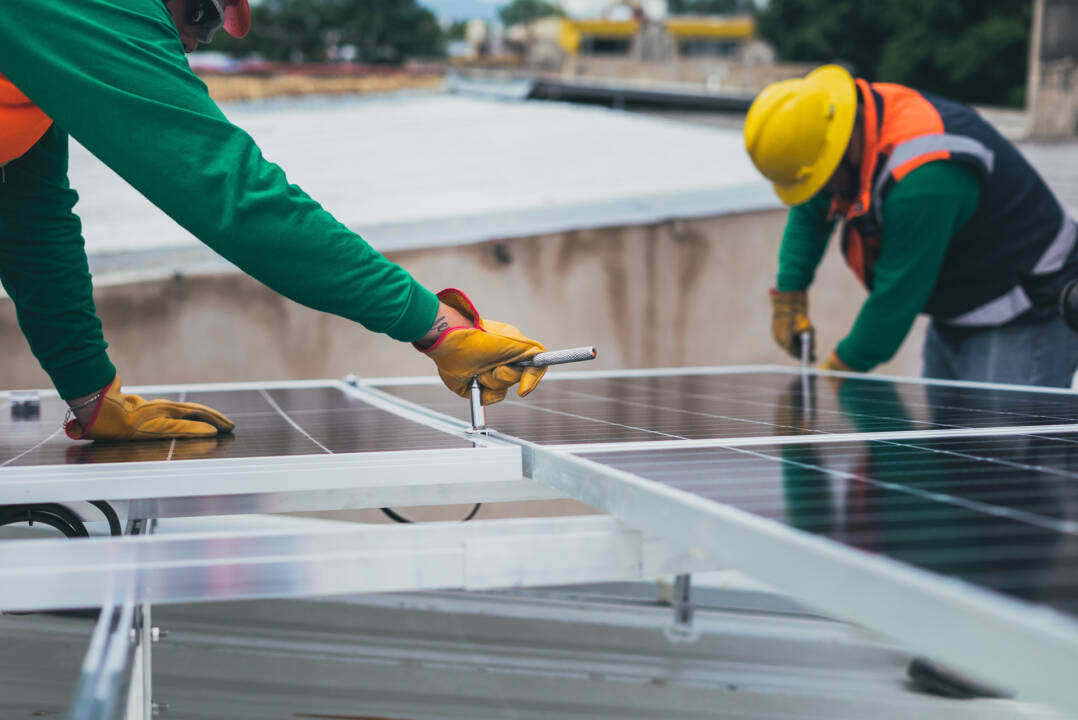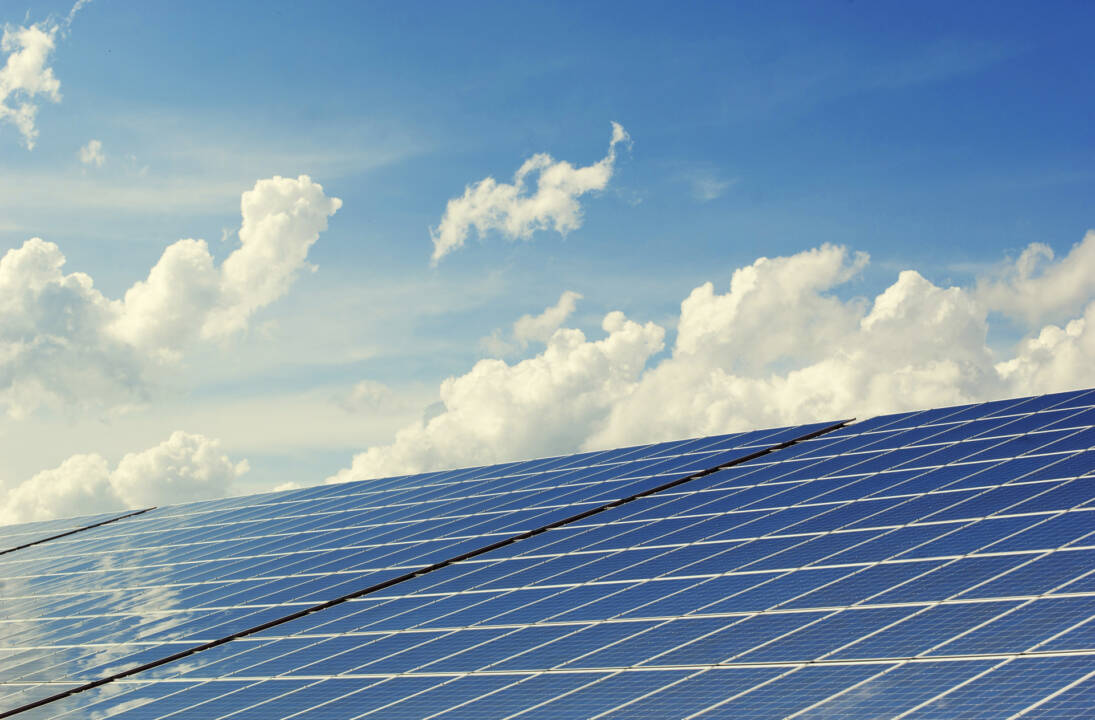Aluminum extrusion profiles are versatile and cost-effective solutions for various industrial applications, and they are extensively used in the solar industry as well. Aluminum extrusion profiles can be customized in different shapes, sizes, and finishes, making them suitable for various solar applications, such as solar panel frames, mounting systems, and trackers. This article aims to provide an overview of the usage areas of aluminum extrusion profiles in the solar industry.
Solar Panel Frames
Solar panels are an essential component of a solar energy system, and their frames play a critical role in ensuring their stability and durability. Aluminum extrusion profiles are commonly used to manufacture solar panel frames due to their high strength-to-weight ratio, corrosion resistance, and ease of fabrication. Extruded aluminum profiles can be designed with various cross-sections, including T, H, and L shapes, to suit the specific requirements of solar panel frames.
Solar Mounting Systems
Solar mounting systems are used to secure solar panels onto rooftops, carports, and other surfaces. Aluminum extrusion profiles are widely used in solar mounting systems due to their lightweight, easy installation, and corrosion resistance properties. Extruded aluminum profiles can be designed with various shapes, such as Z, C, and U channels, to create different types of mounting systems, such as ballasted, fixed, and adjustable tilt systems.
Solar Trackers
Solar trackers are devices that follow the sun’s movement to maximize the energy output of solar panels. Aluminum extrusion profiles are commonly used in solar trackers due to their lightweight, high strength, and durability. Extruded aluminum profiles can be customized in various shapes, such as hollow and solid profiles, to create different types of solar trackers, such as single-axis and dual-axis trackers.
Advantages of Aluminum Extrusion Profiles in Solar Industry
Aluminum extrusion profiles offer several advantages over other materials, such as steel and plastic, making them an ideal choice for various solar applications. This article discusses the advantages of using aluminum extrusion profiles in the solar industry.
Lightweight and High Strength
Aluminum extrusion profiles are lightweight and offer high strength-to-weight ratio, making them easy to transport, install, and handle. This property makes them an ideal choice for solar applications, as they reduce the overall weight of the solar system and enable faster installation, reducing labor costs.
Corrosion Resistance
Aluminum extrusion profiles offer excellent corrosion resistance properties due to the formation of a natural oxide layer on the surface. This oxide layer protects the aluminum from corrosion and prevents the formation of rust, which can reduce the lifespan of solar systems. Corrosion resistance is essential in solar applications as they are exposed to various weather conditions, including rain, snow, and high humidity.
Easy to Fabricate and Customize
Aluminum extrusion profiles can be easily fabricated and customized to suit the specific requirements of solar applications. Extruded aluminum profiles can be designed in various shapes, sizes, and finishes, allowing manufacturers to create unique and innovative solar systems. The ease of fabrication and customization of aluminum extrusion profiles reduces production time and costs, allowing manufacturers to offer competitive prices to their customers.
Recyclability
Aluminum is one of the most recyclable materials, and aluminum extrusion profiles can be recycled repeatedly without losing their properties. Recycling aluminum extrusion profiles reduces energy consumption, carbon footprint, and waste disposal, making them an eco-friendly choice for solar applications.
Aesthetically Pleasing
Aluminum extrusion profiles offer an aesthetically pleasing look and can be finished in various colors and textures to match the design requirements of solar systems. This property makes them a popular choice for residential and commercial solar applications

Design Considerations for Aluminum Extrusion Profiles in Solar Industry
Design considerations play a crucial role in the performance and durability of solar systems, and it is essential to consider various factors while designing aluminum extrusion profiles for solar applications. This article discusses the design considerations for aluminum extrusion profiles in the solar industry.
Load Capacity
Load capacity is one of the critical design considerations while designing aluminum extrusion profiles for solar applications. The load capacity of extruded aluminum profiles depends on various factors, such as the size, shape, and material properties of the profile. Manufacturers must consider the maximum load that the solar system may experience during its lifetime and design the aluminum profiles accordingly to ensure their durability and stability.
Wind Load
Wind load is another critical design consideration for aluminum extrusion profiles used in solar applications. Solar systems are exposed to various wind speeds, and the aluminum profiles must withstand the wind load to ensure their stability and longevity. The wind load on the solar system depends on various factors, such as the location, height, and orientation of the solar panels. Manufacturers must consider these factors while designing the aluminum profiles to ensure their ability to withstand the wind load.
Thermal Expansion and Contraction
Thermal expansion and contraction is a natural phenomenon that occurs in all materials, including aluminum. Solar systems are exposed to various temperatures, and the aluminum extrusion profiles must be designed to accommodate the thermal expansion and contraction. Manufacturers must consider the coefficient of thermal expansion of aluminum and design the profiles accordingly to prevent any deformation or damage to the solar system.
Aesthetics
Aesthetics is an important design consideration for solar systems used in residential and commercial applications. The aluminum extrusion profiles used in solar systems must be designed to match the aesthetic requirements of the building or structure where the solar system is installed. The extruded aluminum profiles can be finished in various colors and textures to match the building’s design and enhance its appearance.
Installation and Maintenance
Installation and maintenance are crucial design considerations for aluminum extrusion profiles used in solar applications. The extruded aluminum profiles must be designed for easy installation and maintenance to reduce labor costs and downtime. Manufacturers must consider the ease of installation and maintenance while designing the aluminum profiles to ensure their accessibility and durability.
Manufacturing Process of Aluminum Extrusion Profiles in Solar Industry
The manufacturing process of aluminum extrusion profiles involves various steps, including billet preparation, extrusion, and finishing. This article provides an overview of the manufacturing process of aluminum extrusion profiles used in the solar industry.
Billet Preparation
The first step in the manufacturing process of aluminum extrusion profiles is the preparation of the billet. The billet is a cylindrical-shaped aluminum block that is heated to a temperature between 400°C to 500°C to soften the metal. The billet is then loaded into the extrusion press.
Extrusion
The second step in the manufacturing process is extrusion. The billet is loaded into the extrusion press, which applies pressure to the metal to push it through a die to create the desired shape of the aluminum extrusion profile. The extrusion process is a continuous process, and the length of the profile depends on the length of the billet and the capacity of the extrusion press.
Finishing
The third and final step in the manufacturing process is finishing. The extruded aluminum profile is cooled, cut to the desired length, and finished to the required specifications. The finishing process includes various operations, such as machining, drilling, tapping, and surface treatment. The surface treatment includes anodizing, painting, powder coating, or chromating, depending on the requirements of the solar system.
Applications of Aluminum Extrusion Profiles in Solar Industry
Aluminum extrusion profiles are widely used in the solar industry due to their excellent strength-to-weight ratio, corrosion resistance, and ease of customization. This article discusses the various applications of aluminum extrusion profiles in the solar industry.
Solar Panel Frames
Solar panel frames are one of the primary applications of aluminum extrusion profiles in the solar industry. The extruded aluminum profiles are used to create the frames that support the solar panels. The frames must be strong and durable to withstand various environmental factors, such as wind, rain, and snow. The extruded aluminum profiles offer excellent strength and durability, making them ideal for solar panel frames.
Solar Mounting Systems
Solar mounting systems are another common application of aluminum extrusion profiles in the solar industry. The extruded aluminum profiles are used to create the mounting systems that attach the solar panels to the roof or ground. The mounting systems must be strong and durable to withstand various environmental factors, such as wind, rain, and snow. The extruded aluminum profiles offer excellent strength and durability, making them ideal for solar mounting systems.
Solar Racking Systems
Solar racking systems are another application of aluminum extrusion profiles in the solar industry. The extruded aluminum profiles are used to create the racking systems that support the solar panels and mounting systems. The racking systems must be strong and durable to withstand various environmental factors, such as wind, rain, and snow. The extruded aluminum profiles offer excellent strength and durability, making them ideal for solar racking systems.
Solar Inverter Housing
Solar inverters are used to convert the direct current (DC) produced by the solar panels into alternating current (AC) that can be used by the grid. The housing for the solar inverter must be durable and lightweight to ensure its longevity and ease of installation. The extruded aluminum profiles offer excellent strength-to-weight ratio and corrosion resistance, making them ideal for solar inverter housing.
Solar Heat Sink
Solar heat sinks are used to dissipate the heat generated by the solar panels or solar inverters. The heat sinks must be durable and efficient to ensure the proper functioning of the solar system. The extruded aluminum profiles offer excellent thermal conductivity and can be designed to provide maximum heat dissipation, making them ideal for solar heat sinks.
Conclusion
In conclusion, aluminum extrusion profiles offer numerous advantages in the solar industry, such as excellent strength-to-weight ratio, corrosion resistance, and ease of customization. The extruded aluminum profiles are used in various applications, such as solar panel frames, solar mounting systems, solar racking systems, solar inverter housing, and solar heat sinks. Manufacturers must consider various factors, such as load capacity, wind load, thermal expansion, aesthetics, installation, and maintenance, while designing the aluminum extrusion profiles for solar applications. The manufacturing process of aluminum extrusion profiles involves billet preparation, extrusion, and finishing, which ensure the high quality and consistency of the profiles. Overall, aluminum extrusion profiles play a vital role in the solar industry, providing the necessary support and durability to the solar systems.

